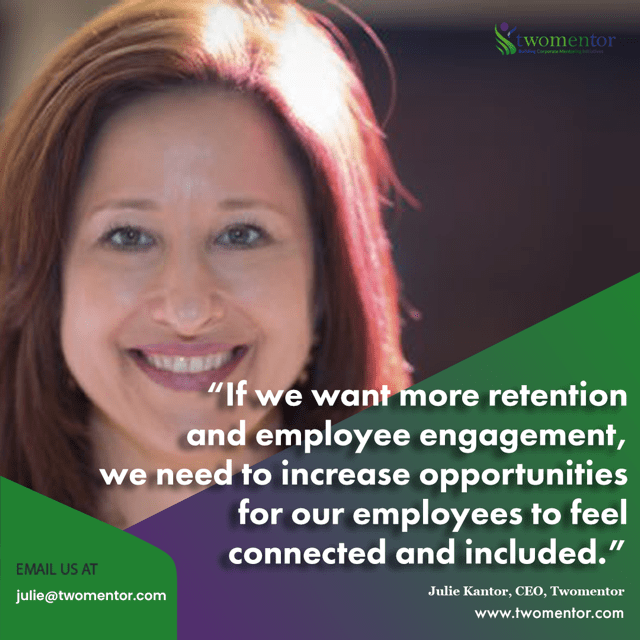Happier Employees: Let’s Revisit Quiet Quitting
“Julie, I am no longer going to put in 120%,” Barry* shared with me after his finance company had a second round of layoffs and he started feeling distrustful and overwhelmed with the additional responsibilities placed on him. The layoffs were not financially motivated and he lost 14 team members. “Maybe I will shoot for 85%, there is more I want to do with my life now,” he confided.
“Quiet Quitting” is shedding light on how professionals see work and sparking conversations about our relationship with workplaces. It isn’t the same as quitting your job completely. It actually means finding a balance between work and life by meeting the requirements and then focusing more time on other aspects of life. It might mean a planned disengagement which we will discuss below in greater detail. Now, let’s dive a bit deeper into this. The rise of “quiet quitting” goes beyond the social media hype. Supported by an Edelman survey of 36,000 people, it’s clear that those aged 18 to 26 are wrestling with major worries – safety, well-being, money, and adapting to rapid changes.
So….what are some of the motivations behind quiet quitting and what can companies do?

According to experts in GQ magazine, people are using “quiet quitting” to deal with burnout. Many younger workers, especially those in their 20s from Generation Z, feel overwhelmed by burnout. About 54% of Gen Z workers are thinking about leaving their jobs because of it. The assumption during the past few years has been that working from home would reduce burnout and yield more time for family and hobbies. Zoom and MS Teams ‘saved the day’ enabling people to work remotely, meet online, and collaborate. Research shows productivity did go up significantly (who needs a 90-minute commute!) but mental health and wellbeing plummeted. As a result of the pandemic, a lot of people of all ages around the world are struggling with their mental health. Nearly 80% of young people are dealing with problems like depression, anxiety, and feeling disconnected or disappointed.

Let’s look back at a few workplace trends that emerged from 2020 to the present. How the way we work changed.
First, many people lost jobs and client contracts in 2020. Then, in 2021, millions left their jobs as opportunities increased and unemployment was low. This big wave of leaving work has been referred to as the “Great Resignation.” People, especially parents, felt too much pressure to the breaking point with schools closed and lack of childcare. A survey by the Pew Research Center showed low pay, not many chances to grow, and feeling disrespected made Americans quit their jobs last year. Many were disappointed by their companies’ handling of COVID-19 and became increasingly isolated with task orientation and dwindling ‘water cooler’ chat that fostered belonging and trust. Being on back-to-back Zoom calls for 6-8 hours a day also had a detrimental impact over time so people elected to multi-task and elected a ‘planned disengagement’ model for coping with these changes. Many chose to no longer put in extra effort beyond their job requirements.
This phenomenon has started to worry business leaders and human resources professionals concerned about maintaining high levels of employee engagement, especially during economic uncertainty. While employees may be striving to retain their jobs with fears around a 2023 recession, it doesn’t necessarily mean they’ll be going the extra mile, particularly when they’re asked to do more with fewer resources.
For individuals in their twenties, entering the workforce during the pandemic has been marked by a series of disruptions. This includes the novel experience of remote work, which has left an indelible mark on their professional journey. As highlighted in an article by The Wall Street Journal, these young workers had to adapt to a transformed work environment, grappling with the effects of remote work and its associated challenges.
What Employers Can Do
Enhancing employee engagement and tackling problems like “quiet quitting and disengagement” are both made possible by revisiting the apple-pie but complex world of mentoring initiatives. Companies can successfully increase employee dedication and value within the organization by developing a strong mentoring culture. The phenomenon of quiet resigning, in which workers gradually leave without giving any obvious symptoms, is likewise combated by this proactive strategy.
Let me just stop and ask a question here. Have you ever been to a professional conference where leaders at the podium, when talking about their professional trajectory or success don’t refer to at least one mentor? In fact, at every conference I attended in the past 24 months, the leading piece of advice to young professionals has been “get a mentor” or “get a sponsor” (someone who can champion you behind closed doors).
Organizations can lower the expenses associated with staff turnover by increasing employee retention rates through mentoring. Mentoring helps to revitalize the energy of the workforce and foster an environment that is happy and productive, which is especially important in the post-pandemic setting.
Research indicates that mentorship benefits both individuals and companies. A CNBC and SurveyMonkey study found that 89% of employees with mentors feel valued by their colleagues, compared to 75% without mentors. Becoming a mentor can enhance your career and contribute to increased engagement, retention, and productivity among employees. This leads to a question: Can mentoring actually help companies keep employees engaged and interested?
Mentoring has become super important for businesses, especially after the pandemic. Skilled workers are okay with leaving their jobs for better ones. They want a better life, balance, pay, and learning chances. A lot of people, like a whopping 65% or even more, kept looking for new jobs in 2021, 2022, and 2023 (PwC).
Businesses in the US lose an incredible amount of money, almost 1 trillion dollars because employees leave and it costs a lot to replace them, sometimes twice their salary (Gallup). Regardless of their role– workers, bosses, or even higher-ups – those who have mentors are way less likely to think about quitting their jobs (CNBC/SurveyMonkey).
Quiet quitting arose as a response to the question: “How are you demonstrating care for your employees?”
Workers now seek more than just a paycheck – they want an experience that values their holistic well-being. This trend highlights the need for mentoring programs, which show genuine investment in employees, ultimately curbing the quiet quitting phenomenon and fostering a supportive workplace culture.
###
Julie Silard Kantor has spent 30 years in workforce development and served in leadership roles to build a more diverse, engaged workplace. She and her team at TwoMentor custom-build mentoring initiatives to drive employee engagement, and retention, and support M&A integrations. Contact: Julie@twomentor.com




